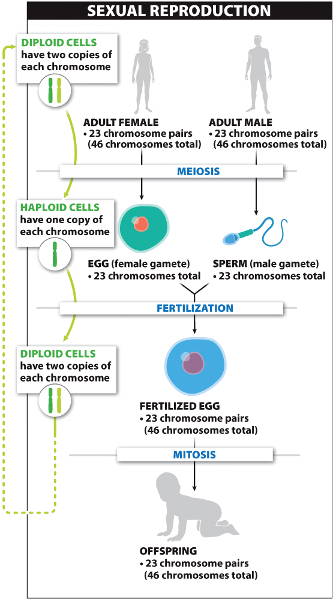 Sexual life cycle
Sexual life cycle
Most of our body cells are somatic cells that are diploid:
they have 2 sets of chromosomes, one set inherited from each parent.
Humans have a diploid number of 46: 23 chromosomes inherited from each parent.
Some somatic cells undergo meiosis to form sex cells called gametes
(eggs and sperm).
Gametes are haploid and can pass on 1 set (23 for humans) of chromosomes to
offspring.
Fertilization from the fusion of haploid gametes creates the diploid zygote, or fertilized egg.
The zygote undergoes many rounds of mitosis to produce
the somatic cells of the organism.

 Chromosomes and cell division
Chromosomes and cell division 
 Chromosomes and cell division
Chromosomes and cell division 